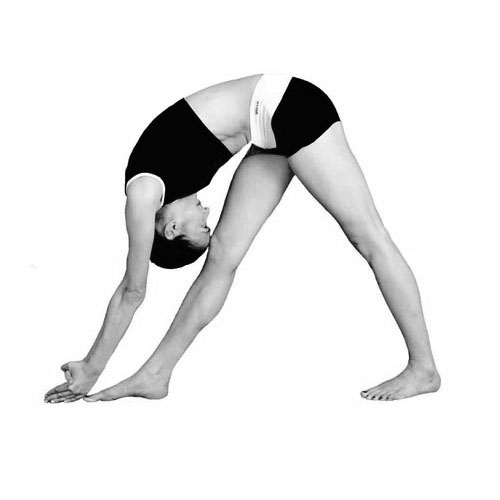
A recent study has revealed that one out of every six individuals suffer from Restless Leg Syndrome, the main target being people aged above 50 years. Restless Leg Syndrome, commonly known as RLS is a condition in which the sufferer gets unpleasant feelings in the legs which include sensations like crawling, aching, pricking, tickling, accompanied by a feeling of tiredness and heaviness in the legs. This instigates an urge to shake the legs while being seated or in bed. Sometimes, even in deep slumber, legs can move anytime as a response to the syndrome’s consequences, thereby leading the person to undergo sleeping disorders. The best resort to deal with this situation is to work-out your legs and involve them in different physical activities like swimming, running, cycling, walking and yoga on a regular basis. These physical exercises assist drastically in lessening the severity of RLS, thereby helping in quelling the strange sensations felt in the legs and even putting the individual back to sleep again. Other than the conventional treatment methods, Yoga especially, has proved quite useful in alleviating the symptoms of RLS. Whenever you suffer the problem of insomnia due to RLS it is best advised to get up and start walking, undergo certain forward and backward bends or indulge in chair pose and warrior pose in a slow motion concentrating mainly on your breathing techniques. Yoga poses which enable contracting the thigh muscles, stretching the calves, gluten muscles and the hamstring region or flexing and extending the solar plexus and pelvis can work like wonders in providing relief from the problem of RLS. Lets check out some of the most beneficial yoga poses to cut on your stress levels and provide relif from Restless Leg Syndrome.
Legs up the wall pose
To kick start your Yoga exercises for providing relief from RLS, begin with some restorative poses and hold them for several minutes as they help a lot in warming up the body prior to the main action. Legs lifted up the wall position ensures better blood circulation in the veins and also helps in releasing the stress which ultimately assist in fighting the syndrome of restlessness. To practice this, lie down flat on the floor on your back against a wall with legs reaching straight up the wall. If you find it difficult to lift them in the initial attempts, you can begin in a seated position facing the wall and you swing your legs in an upward direction as you transition down while lying on your back. If required, you can place a pillow or blanket underneath your lower back and buttocks for added support. Hold the posture for a few minutes and eventually try to work your way up to 5 to 15 minutes in every yoga session.
Reclining big toe pose
Reclining big toe pose is a restorative yoga posture which aids in settling the body into a sense of stillness and preparing for a good night’s sleep as well. A few minutes of gentle stretching movements can warm up the cold muscles and drive restlessness away from your body by working on the leg muscles and stretching and strengthening them completely. To undergo this posture, stretch out you legs in front of you as you lie flat on the floor with chest facing upward. Now, looping a strap around the ankle region, try grabbing both the edges of the strap with your hands and raise your legs upward to bring them at 90 degrees with the floor. The shoulders and hips should stick to the ground level. Keep holding this position for 1 to 3 minutes before releasing and switching to the other leg.
Reclining bound angle pose
Simple yoga exercises, if teamed with deep breathing techniques, can assist in relieving stress which in turn would help a lot in doing away with the inconvenience caused by RLS. One such pose is the reclining bound angle pose in which the sufferer has to sit with legs turned out and bent while the bottom of the feet remains together. Now carefully, lowering your back to the ground level, lean on your hands for support. You can even place blankets or pillows underneath your knees and head for added support if you so please. Your arms should be resting at a slight angle along the sides. Refrain from pushing your knees down to the floor as it is not required to undergo a proper stretch posture. During your first attempt, hold it for a minute and gradually increase the time to 5-10 minutes with every practice session.
Downward facing Dog pose
The Downward facing Dog pose or Adho Mukha Svanasana puts the entire body in action as it stretches the full body and incorporates every inch of it. It is very beneficial in treating a lot of diseases like asthma, insomnia, fatigue and RLS as well. It helps in stretching and strengthening the hamstrings, calf muscles, hands shoulders and feet and even assists in improving and cleaning the digestive system. To begin with this pose, balance your body on your hands and knees, the legs should be spread to hip width, hands should be flat and fingers spread out. Now, breathe in deeply and while breathing out try lifting your knees as you press your toes onto the ground. The legs should be moved back while lifting the hips simultaneously towards the ceiling.Now, without locking knees, indulge in pulling your tail bone inwards and straightening your arms extend forward on your finger tips. Next, rest your heels on the ground by straightening your legs and lowering your head in between your upper arms. This position should be held for a minute or far a longer duration if you comfortably can before retreating into child pose.
Head to knee pose
The head to knee pose stretches the full body and relieves tension accumulated around the joints thereby assisting in releasing stress and fighting the problem of RLS. To do this exercise, stretch out your legs in front of you while sitting on the floor. Drawing your left foot close to your pelvic region, anchor it against the upper portion of your right thigh, letting your left knee to lie on the floor.Now, lengthening your upper body by raising it up above the waist level, fold forward in front as you exhale, with your hands positioned to slide on the floor beside your right leg. Try bending forward as much as you comfortably can without straining your lower back or the hamstrings. If you are able to touch your toes, then softly grip the sides of your right foot with the help of your hands. Throughout the exercise keep breathing normally as you remain positioned in this posture for up to a minute. Do the same repetition with the other foot on the other side.
Wide Angle Seated Forward Bend pose
For the wide angled seated forward bend pose, spread out your legs as muchj as you can while being seated on the ground keeping your feet flexed towards the ceiling. Breathe in, and as you breathe out try twisting your torso a little to the left side. Now, folding in front from waist level on to your left leg, try to reach your toes. However, remember bot to force yourself through it at any stage. In case you cannot make it to the tip of the toes, let your hands lie on top of your left leg. Remain in this posture for 5 breathing rounds and then twist from your waist to the right while walking your hands over your right leg. Here also, hold while you take 5 breaths. The entire sequence can be repeated for as many times as you comfortably can. Remember, following a regular schedule of exercises comprising of stretching and stress easing forms can endorse and ensure a better compatibility with the symptoms of Restless Leg Syndrome.








